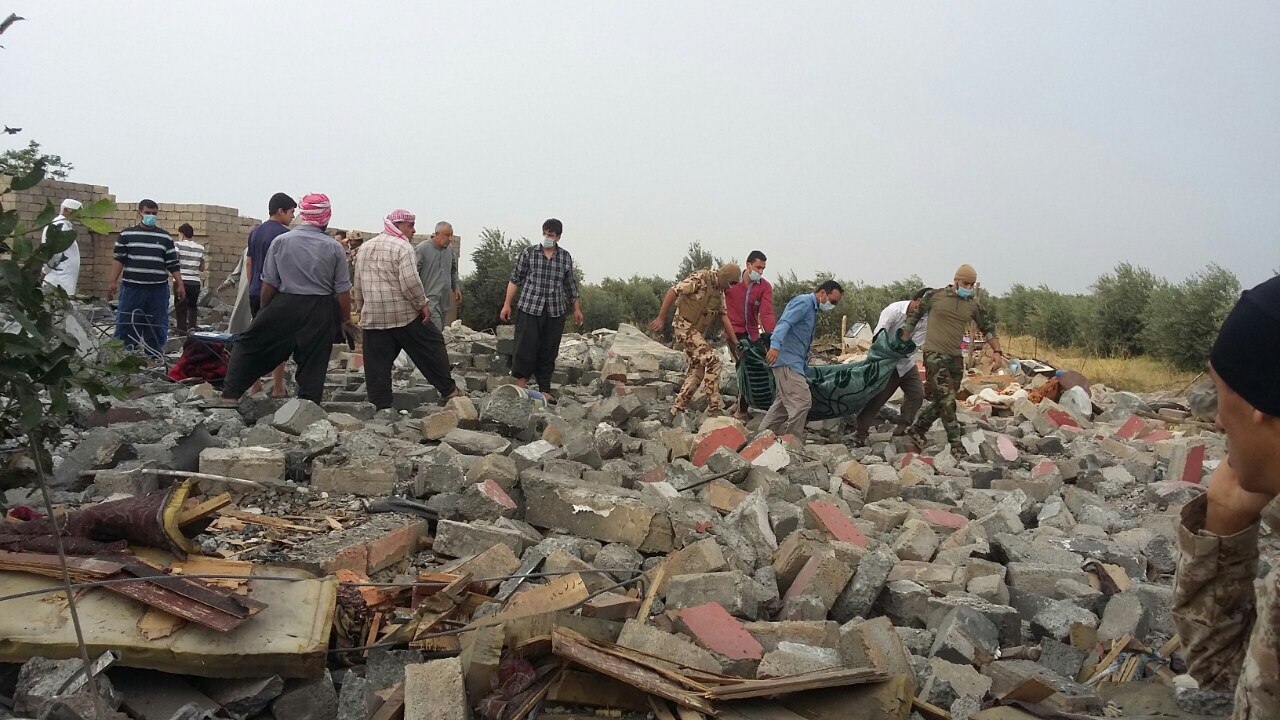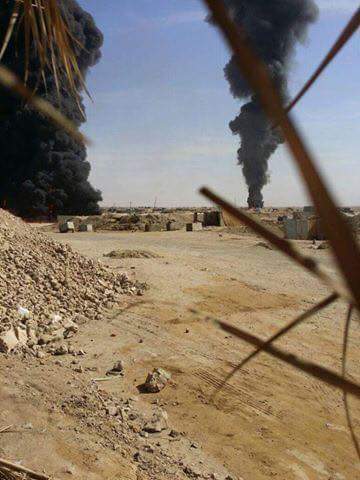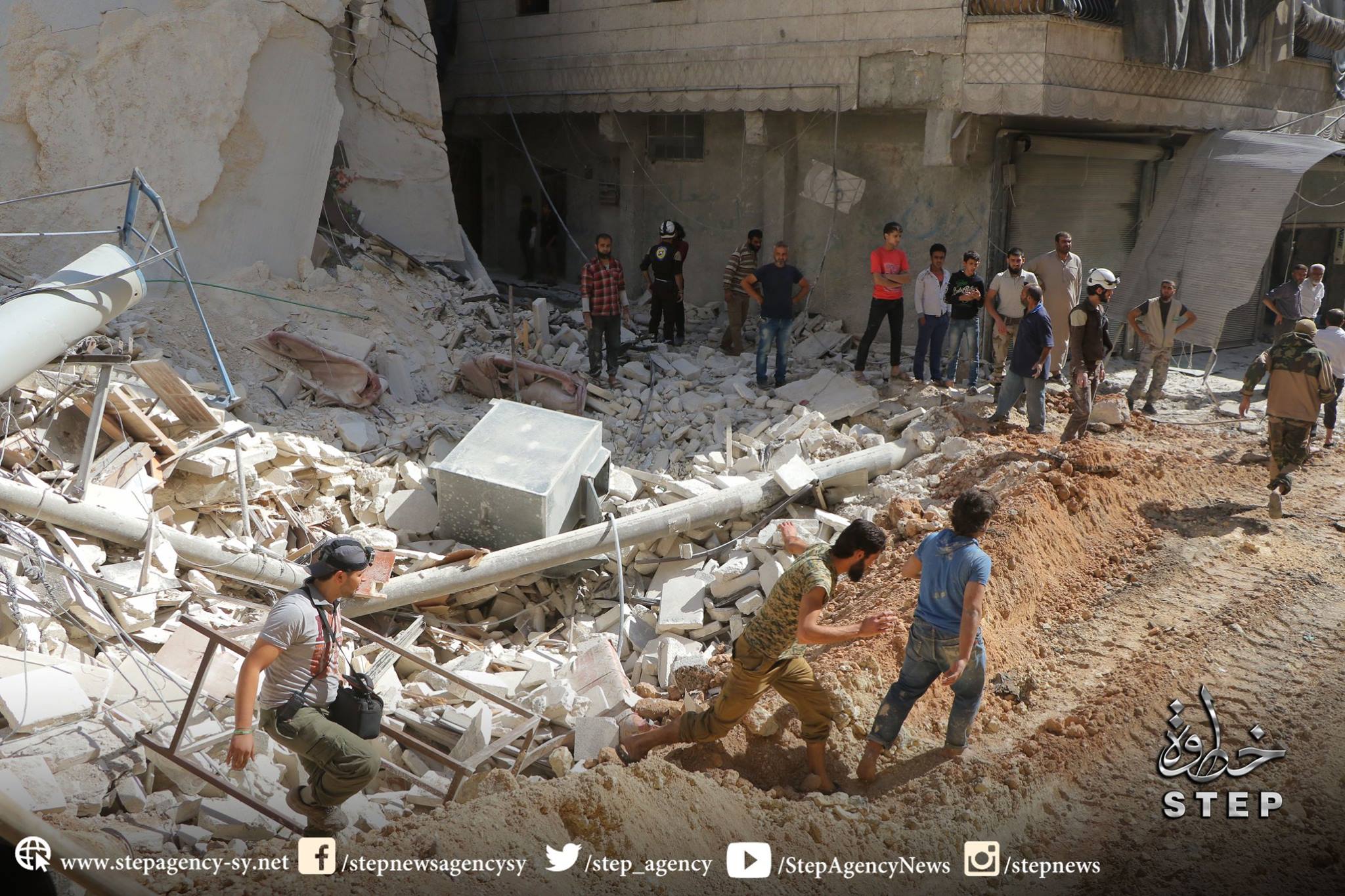October saw the start of the long-awaited offensive to retake Mosul from so-called Islamic State, as the Coalition majorly increased its bombing campaign near the city in support of Iraqi Security Forces and Kurdish Peshmerga. From October 17th onwards, we began tracking a significant impact on civilians.
Non-combatants faced a similarly perilous situation in Syria, where Airwars tracked a 50% rise in civilian casualty incidents reportedly involving the Coalition. Turkey’s unilateral campaign in northern Syria also affected local non-combatants. And despite Russia pausing its attacks on Aleppo for part of October, the civilian death toll from its actions remained alarmingly high.
Coalition military developments
Since the start of the Coalition campaign, 10,315 airstrikes have now been carried out in Iraq and 5,647 in Syria through the end of October 2016. For the first time in four months, declared Coalition airstrikes in Iraq during October (301) outweighed those in Syria (273).
The six declared active allies (the US, UK, France, Belgium, Denmark and Australia) between them dropped 3,038 munitions on ISIL in October, a 25% per cent increase on the previous month. In just the first five days of the battle for Mosul, the Coalition reported that it had dropped 1,400 munitions in the area.
According to official CENTCOM figures released to Airwars, in the period of October 2nd-31st the US carried out 226 strikes in Syria, a decrease of 32% on the previous month. The US’s allies conducted just 17 strikes in Syria between them.
In Iraq during the same four week period, US strike numbers remained fairly static with 185 reported. However, given that there was at the same time a 25% increase in the number of bombs and missiles dropped, this illustrates how problematic the term ‘strike’ remains.
For example on October 22nd – the single most intense day of reported activity during the month – the “four strikes” at Mosul announced by the Coalition gave no sense of the 65 targets struck in and around the city that day, including 21 ISIL “fighting positions” and 10 mortar systems.
Video showing France’s first joint strike mission on October 15th using navy and airforce Rafales, to target an ISIL IED factory in the Mosul area
France: a greater role?
In October France appeared to surpass the UK in becoming the second-most active member of the Coalition. It declared 95 airstrikes in Iraq (an increase of 239% on September), with 68% of actions conducted in the vicinity of Mosul. France also reported carrying out 10 strikes in Syria – up from zero in September.
October 24th saw France’s highest level of reported daily activity in two years, with 12 strikes destroying 15 ISIL targets. And on October 31st France again used its SCALP cruise missiles, this time in “a massive raid” with six other Coalition nations on a reported ISIL weapons complex in the Haditha area of Iraq.
However, appearances of greater French activity may be deceptive. Given that official CENTCOM figures show that all of the US’s allies carried out 82 strikes in Iraq in October between them – and France alone reports carrying out 95 strikes in Iraq during that time – it appears that France is using a more generous definition of the term ‘strike’ to that used by the Coalition. Conversely the UK – which reported 50 strikes in Iraq for October – uses the Coalition’s definition of ‘strike’ in its own reports.
There was also a significant increase in actions by Denmark for October, which reported 83 weapon releases during approximately 20 strikes – a 63% rise on September.
Focus: the battle for Mosul
On October 17th Iraq’s prime minister formally announced the start of the long-awaited Coalition-backed offensive to take Mosul from ISIL – its last major stronghold in Iraq.
Lt. General Stephen Townsend, commander of the Operation Inherent Resolve task force, said the operation would “likely continue for weeks, possibly longer“, with the US 101st Airborne spearheading a coalition of 19 nations in support of operations to secure the city.
But with at least one million civilians trapped within Mosul, fears of a humanitarian catastrophe escalated. The UN’s OCHA predicted that 200,000 civilians could flee the city in the first few weeks of fighting. By the end of the month it was reported that ISIL was already using tens of thousands of civilians as human shields, a tactic previously employed in Manbij, Syria.
Overall, 129 strikes were conducted by the Coalition in the vicinity of Mosul during the month – a reported increase of 50% from September.
By October 18th, Iraqi government and Kurdish forces were already announcing that they had reclaimed 20 villages on the outskirts of Mosul. By the end of the month troops were preparing to enter the eastern edge of the city – widely expected to be a much tougher fight.
Airwars analysis of targets reportedly targeted by the Coalition in the first two weeks of the Mosul offensive shows that the majority of strikes were providing close air support for Iraq Army and Peshmerga troops: A quarter of all targets destroyed were ISIL “fighting positions” (129) followed by “vehicles” (81) and “VBIEDS” (21) – or suicide car bombs.
Mortar systems were also heavily hit, accounting for 14% of targets destroyed. ISIL’s complex network of tunnels under Mosul posed a continuing threat to troops. These were heavily targeted in October, with 45 tunnels and tunnel entrances reportedly destroyed.
On the day that the battle for Mosul was officially declared – October 17th – an RAF Typhoon is shown destroying an ISIL truck bomb near Mosul
Coalition civilian casualties
October saw a steep rise in civilian casualty incidents involving the Coalition – with likely civilian deaths more than tripling compared to September. Overall, there were 45 alleged civilian casualty incidents involving the Coalition reported for the month. A total of 245-303 non-combatant deaths were claimed in these events.
Airwars presently assesses 23 of these 45 events as being fairly reported – that is, with two or more credible sources and Coalition strikes confirmed in the near vicinity. Between 122 and 148 civilians are presently assessed as likely having been killed by the Coalition in these October incidents. This compares with between 36 and 48 such deaths in September.
Mosul: danger mounts for families and children
As the Coalition intensified its bombing campaign near Mosul, Airwars tracked a leap in claimed civilian deaths. All but two of 18 claimed casualty events in Iraq for October were in the Mosul area.
Of these, Airwars assesses ten events as having likely killed between 72 and 83 non-combatants between them, with a minimum of 34 injured. Of these fatalities, at least 33 were reportedly children and seven were women – with the number of claimed child deaths rising as the battle intensified.
The first major casualty incident of the month came on October 2nd, when up to 23 civilians including 17 children, were reported killed in an alleged daytime Coalition airstrike on Mosul’s Najjar neighbourhood.
Iraqi Spring said Coalition jets struck “a home for displaced families.” A video originating from ISIL’s media wing showed considerable destruction and the removal of bodies – including those of children.
https://www.youtube.com/watch?v=_bVTa15fqv0
GRAPHIC: At least 19 civilians, many of them children, died in an alleged Coalition strike at Mosul on October 2nd 2016. The video originated from ISIL.
The frequency of alleged events at Mosul increased from October 17th onwards, with our researchers tracking reported incidents almost daily.
A family of eight including three children died on October 22nd at the ISIL-occupied village of Fadhilya outside of Mosul. “I could just see part of my nephew’s body under the rubble,” resident Saeed told Iraq-based reporter Fazel Hawramy. In a statement to the Guardian seen by Airwars, the Coaltion later confirmed it had carried out strikes in the area, and had launched an investigation.

Dead bodies of a family of eight are removed from the aftermath of an alleged Coalition strike on a home in Fadhiliya, October 22nd (Picture courtesy of Fazel Hawramy).
Yet another family – including seven children this time – reportedly died two days later on October 23rd-24th in the town of Tel Kepe, 15km north of Mosul. The dead father was named as Hussein Juma Dalal Al Hadidi, with a source telling Yaqein that Mr al Hadidi’s wife had been left in critical condition. While most sources blamed the Coalition, it was also reported that the government of Iraq had also conducted aerial operations in support of its forces attempting to retake Mosul.
An investigation by Airwars in-house reporter Samuel Oakford revealed that the Coalition had already bombed Mosul on more occasions than any other location in Iraq or Syria during the two year war – even before the present offensive began. A minimum of 469 civilians had likely died in 110 casualty incidents attributed to the Coalition at Mosul.
Syria: a doubling of incidents
An already complex situation became even more confused in October, as Turkey pushed deeper into northern Syria alongside its Free Syrian Army allies. Operation Euphrates Shield was aimed both at ISIL, and at Kurdish forces allied to the US-led Coalition. Meanwhile the US’s own favoured proxy – the Kurdish-dominated Syrian Defence Force (SDF) – continued its own advance on ISIL in Raqqa governorate.
Turkey’s actions in both Iraq and Syria are now considered unilateral by the Coalition despite its nominal membership of the alliance. Yet casualty monitors on the ground have often confused the actions of the two parties. Eight alleged incidents in Aleppo during October saw both the Coalition and Turkey being blamed for as many as 66 civilian deaths.
Of 27 claimed civilian casualty incidents overall in Syria during October (a 50% increase on September), Airwars presently assesses 13 of these events as having been carried out by the Coalition. Between 50 and 65 civilians likely died in these incidents – a significant increase on the 13 to 16 likely deaths reported the previous month.
As well as Aleppo province, major Coalition incidents of concern were also reported in Deir Ezzor and Raqqa.
On October 16th 12 civilians were reported killed including women and children following an alleged Coalition strike at Al Jurnia in Raqqa, according to local reports. Raqqa is Being Silently Slaughtered said that “the family of Mohammad Abdallah al Borsan” was “martyred in its entirety.”
On the same day, at least ten civilians were reported killed when airstrikes hit oil installation workers and fuel truck drivers at al Baghouz desert in Deir ez Zor governorate.
The month ended on another ominous note for civilians, with Lt. General Stephen Townsend saying that the Coalition-backed offensive to retake Raqqa was now imminent.

A burning oil facility in the al Baghouz desert after being hit in a Coalition strike October 16th 2016. At least 10 civilian workers reportedly died (via Sound and Vision)
Russian military actions and civilian casualties
In Syria during October, the Assad regime continued its assault on rebel-held areas of Aleppo supported by Russian airstrikes. While allegations of civilian casualty events involving Russia decreased by 20%, they still remained at alarming levels. Airwars raw estimates indicate that up to 612 civilians allegedly died in claimed Russian airstrike incidents during October.
Overall, Airwars tracked 133 separate civilian casualty events allegedly involving Russian aircraft, against 167 events in September. Some 59% of these October events occurred in Aleppo governorate. With the Coalition, Russia, the Assad regime and Turkey all now regularly bombing in the area, it is becoming increasingly difficult for monitors to identify those responsible for civilian deaths.
A unilateral ceasefire called by Russia on October 17th – which Moscow said was to allow civilians to escape eastern Aleppo – led to a 41% decrease in the number of alleged Russian events against the previous week. However Russian strikes shifted their focus to Idlib governorate, where Airwars tracked eleven claimed casualty events in just two days (October 20th – 21st).

The White Helmets attend the scene of an allaged Russian strike on Al Ferdos, Aleppo on October 11th 2016 (via Step News)
Airwars research team: Kinda Haddad, Latif Habib, Abdulwahab Tahhan, Eline Westra, Basile Simon, Christiaan Triebert, Samuel Oakford and Chris Woods
